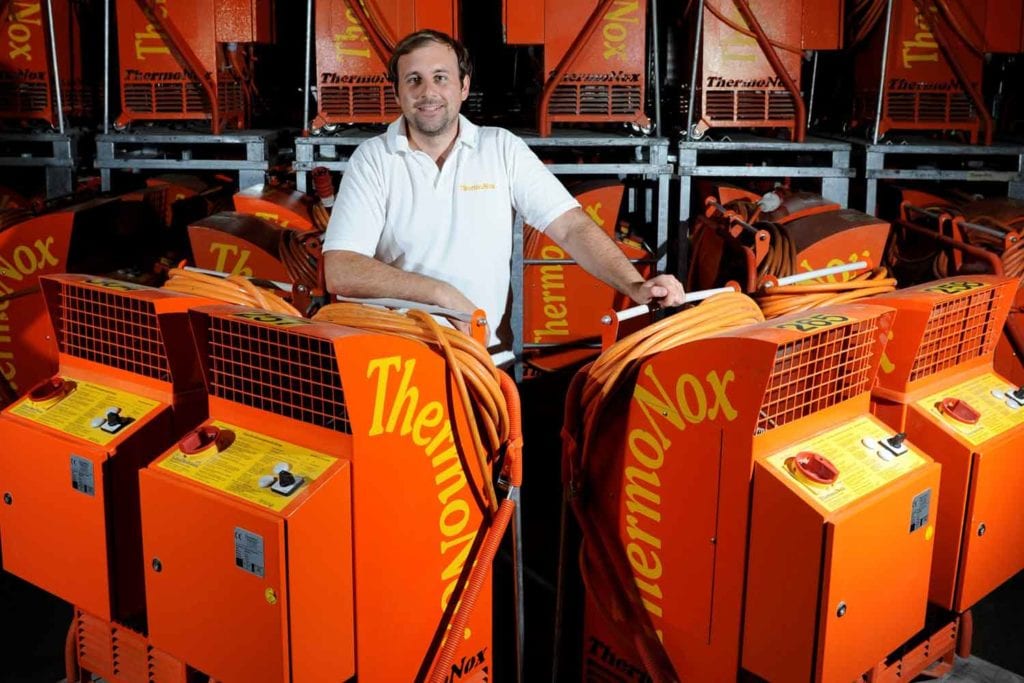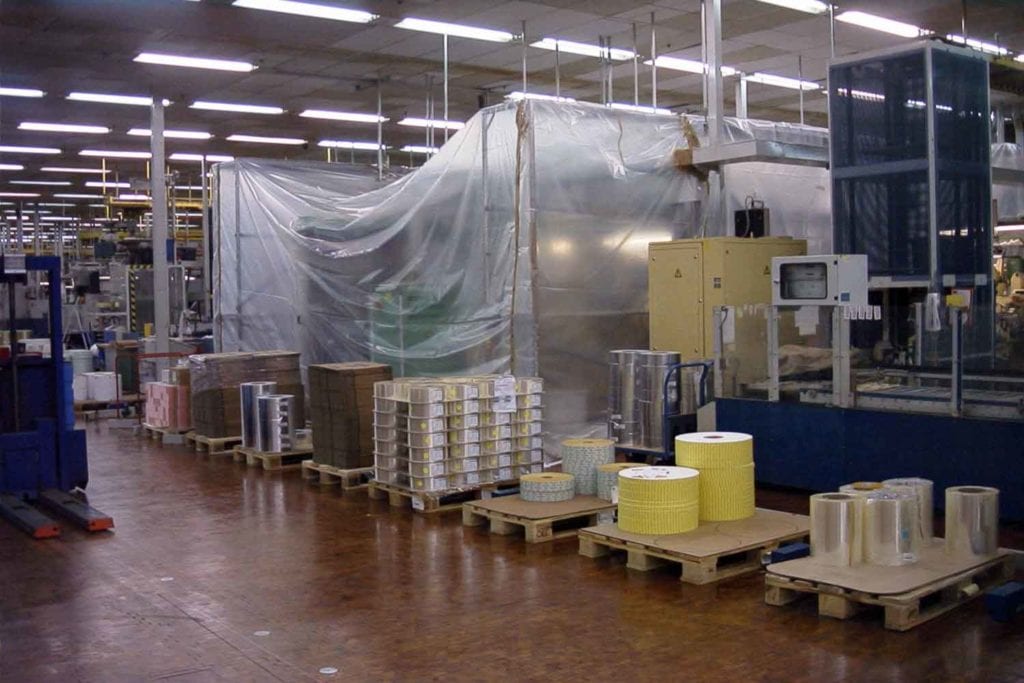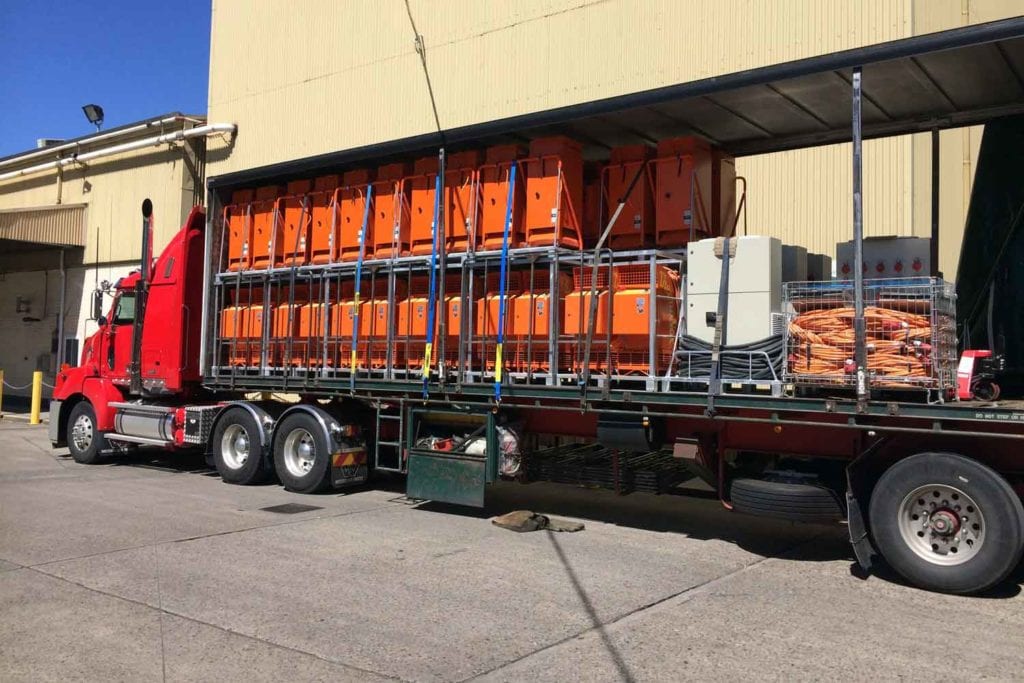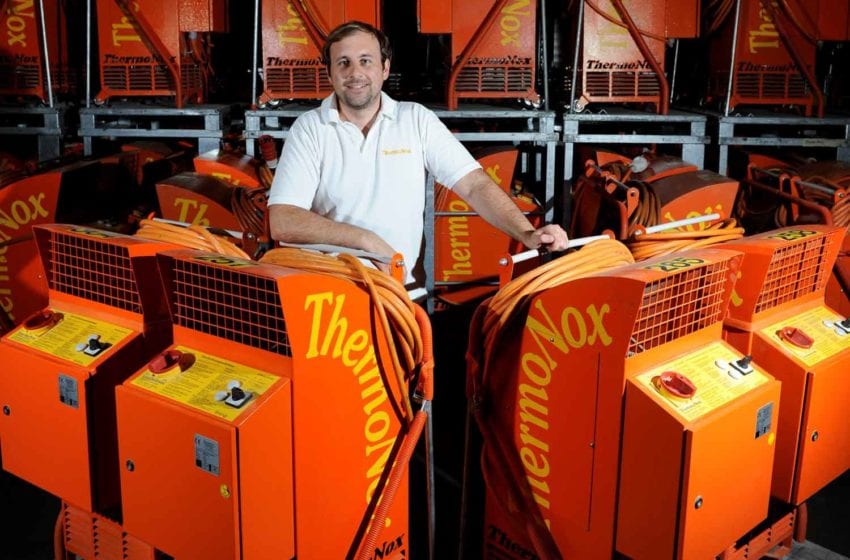
ThermoNox eradicates tobacco pests by raising the temperature.
By Stefanie Rossel
When it comes to cured tobacco, “Don’t let the bugs bite” gets a whole new meaning. Avoiding infestation of the valuable raw material with cigarette beetle (Lasioderma serricorne) and tobacco moth (Ephestia elutella) during storage, manufacture and distribution remains a challenge. The worldwide annual loss of stored tobacco is estimated at between $400 million and $800 million.
The insects are prolific. In a tobacco bale, the female cigarette beetle can produce up to 32 billion descendants per year. They thrive in warm and humid warehouse environments in which the larvae feed on dried tobacco, pressed lamina or cut rag. By contaminating the product with their excretions, they make it unusable. The creatures are notoriously difficult to eliminate: Equipped with a special breathing system, cigarette beetles can survive a long time without gas exchange and with extremely little oxygen. In each of their lifecycles—beetle, egg, larvae, pupae, cocoons—the bugs adapt to their environment for survival.
But even these survival artists have a weak spot, and this is where ThermoNox comes in. The Bavarian family-owned company has developed a patented low-heat treatment method of the same name, which makes use of the fact that insects, including adults, larvae and eggs, cannot survive temperatures of 46 degrees Celsius (115 degrees Fahrenheit).
The process is similar to that of frying an egg.
Unlike humans, insects can’t control their body temperature. When exposed to that heat for some time, the proteins in the vermin’s body will irreversibly “denature”—they coagulate and become hard and inactive. The process is similar to that of frying an egg.
Designed for eradicating pests from empty rooms and manufacturing lines, the system works with strategically placed electrical ovens supported by special fans. By recirculation, they heat the ambient air to 120 degrees Fahrenheit for 15 hours to 30 hours. The lethal temperature is then maintained for 10 hours to 25 hours. “Machinery must be unplugged and free from product as we work with a gentle but defined heat to avoid any damage on the equipment,” says Martin Hofmeir, ThermoNox’ CEO. “Our goal is to reach every little corner and hiding place of all insect development stages.”

Accepted standard
Thermal disinfestation is one of four pest control standards approved by Coresta. Tobacco fumigation with phosphine gas, which has been employed for decades, is still the most used method, requiring low initial investment and involving low long-term cost. As the complete warehouse can be sealed for fumigation, the process allows for high-volume treatment. If protocols are followed, it leaves no chemical residues after the treatment. However, because the treatment isn’t always applied properly, increasing resistance against phosphine among cigarette beetles has been observed worldwide.
Another accepted standard is controlled atmosphere (CA), a relatively new method to the tobacco industry. The process consists of a specially constructed, gastight chamber in which a commodity is treated in an artificially engineered atmosphere. In the case of infested tobacco, it’s a low-oxygen treatment in which the oxygen level in the chamber is reduced to below 0.5 percent to ensure a 100 percent mortality rate in all life stages of the insects. While involving initial investment to set up the gastight chamber, it can treat all types of leaf tobacco without affecting taste and color. It’s unsuitable for high-volume treatment, however. To make CA effective, procedures need to be strictly followed.
A third, but rarely used, process is freezing the tobacco to below 20 degrees Celsius. While efficient, the technology is expensive and not suitable for handling the high volumes common to cigarette production. It is therefore presently used only to treat high-value cigar leaves.
External requirements for thermal disinfestation are less demanding. Cigarette production floors are separate rooms, hence factors such as the outside temperature and the climate zone in which a factory is located play no role. Because the tobacco industry works with batches, individual cigarette-making lines are often separated. This means a simple foil can be used to enclose an infested machine and place the ThermoNox system around it. “Thus, we can provide a comparatively fast treatment on the spot,” Hofmeir points out. For ThermoNox to treat an entire room, building or factory floor, it is typically sufficient to simply shut off the ventilation system and close all doors and windows. This is a considerable advantage over tobacco infestation control systems, such as phosphine fumigation or controlled atmosphere, which require hermetically sealed rooms and require significant preparations.
But then, the two latter procedures are used exclusively to treat stored product—an application where thermal disinfestation, being a physical procedure, reaches its natural limits. “Due to their insulating effect, tobacco bales cannot be disinfested with heat,” explains Hofmeir. “By contrast, phosphine fumigation and controlled atmosphere are quite sensitive in use, and you cannot employ them in machinery disinfestation. Phosphine will affect non-ferrous metals, which is a huge disadvantage if you think of expensive, high-tech tobacco machinery. In the tobacco sector, we see the unbeatable strength of our process in the treatment of empty rooms and manufacturing lines. ThermoNox is the only thermal heat infestation control system that has been officially endorsed by German original equipment manufacturer Hauni for its machines.”

Reliability
The fact that ThermoNox is such a well-known name in the tobacco industry is due to coincidence rather than marketing. Hofmeir’s father developed the system in the early 1990s to combat pests, such as flour and rice beetles, in the family’s grain mill. The method soon became popular with the hospitality industry where it helped fight bed bugs and other insects. In 2007, British American Tobacco approached the Bavarian company, looking for a disinfestation solution for its German cigarette factory in Bayreuth. Since then, the ThermoNox system has been used by all leading tobacco companies.
Preventing reinfestation after successful disinfestation requires a comprehensive integrated pest management system that incorporates all parts of the upstream production process, according to Hofmeir. “This includes meticulous monitoring of the raw material as well as keeping all areas of production and machinery pest-free. Additionally, strict spatial separation of raw material, intermediate and finished products is necessary, preferably with a one-way system and locks. Pest control actually is the last method of choice in IPM.”
The tobacco sector, he adds, is characterized by good pest monitoring in its manufacturing lines. The raw material is also carefully controlled and treated on its various paths through the supply chain. “Since we securely kill off all development stages of tobacco pests with our method, disinfestation intervals are generally longer than with fumigation.”
In recent years, Hofmeir has observed a globally growing trend toward sustainability and away from toxin use across all industries. “This awareness starts with the consumer and moves backwards through all supply chains,” he says. “But apart from meeting this trend, our method simply is the most successful in its area of application, which is a win-win for all stakeholders. The increasing resistances against various chemical substances accelerate the switch to thermal disinfestation even more.”
The company has franchised its technology to partners around the world and has successfully carried out disinfestations in 45 markets and all sorts of industries. Hofmeir emphasizes that his company aims for moderate growth because it refuses to compromise quality of execution. “In the end, we will help every customer who needs our help,” he explains. “Asia, of course, is a huge market with a lot of potential. This is true for the tobacco sector as well as for other industries.”
ThermoNox has also felt the changes in the industry, including the shift of tobacco production from stagnating Western markets to more promising countries in Asia and elsewhere. “Our main markets, however, are the food sector, followed by the hospitality industry. Hence developments in the tobacco industry don’t hit us as hard as, for instance, the almost 100 percent decline in the tourism sector caused by the Covid-19 pandemic, which meant a massive decrease in orders in bed bug disinfestation.”
Despite such challenges, Hofmeir remains optimistic. “As a family-owned business with franchise partners, we have a different approach than large corporations that have to meet shareholder expectations. As a company, we continuously develop further with the challenges of our customers. This way, we won two new industries as our customers in recent years. Hence if one door closes a little, another one will open.”


